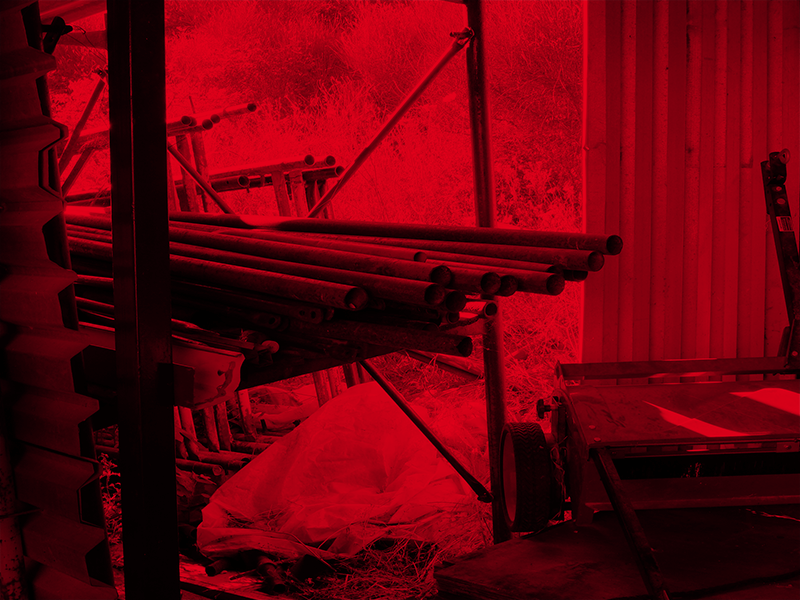Shift Register – Marin Howse (UK/DE) + Jamie Allen (CA)
location: Workshop east of Ekklesiasterion map >>>
presentation June 3rd: Asklepieion map >>>

Those gods who are considered earthly […] come from a mixture of plants, stones and spices.
[Asclepius]
Thus, there are reflections of the incorporeals in corporeals and of corporeals in incorporeals – from the sensible to the intelligible cosmos, that is, and from the intelligible to the sensible. Therefore, my king, adore the statues, because they, too, possess forms from the intelligible cosmos.
[Corpus Hermeticum. XVII]
Archaeologists of the future find only rats and weeds among the shattered ruins. What the hell happened!? Was it not here that men and women once laughed and cried?
[Gemma, Dimitris Liantinis]
What if it is only in the encounter with the inhuman – the liminality of no/thingness – in all its liveliness, its conditions of im/possibility, that we can truly confront our inhumanity, that is, our actions lacking compassion?
[On Touching – The Inhuman That Therefore I Am, Karen Barad]
The Shift Register team of speculative researchers, outsider archaeologists and amateur industrial historians have discovered the presence of technologically advanced and still active Graeco-Egyptian cult activity in the area of Ancient Messene, in the Peloponnese. There is evidence of rituals, centred on the site of the Asklepieion and various sanctuaries on Mount Ithome, that provide new insights into links between immortality, industry and the ecological. Using unconventional methods, borrowing from computer science (speculative look-ahead computation), litho-acoustics, archaeoacoustics and petrophysical seismology, the team claim to have decoded a series of encrypted vocal messages and instruction sets which point towards an advanced culture, a spectral community of the (non-human) living and the dead. These instructions equally suggest the reconstruction of technical instruments which can further reveal the rooted beliefs and practices embedded within the earth, rocks and plants of Ancient Messene.
Contemporary findings and the continuation of Shift Register methodologies, suggest the construction of a series of discrete and distributed structures and points in Messene. These would be new archaeologies of the afters, the post (after the crash, after life, post-human marks, the memorial), marked by observations, processes and instrumentation. These points, these instruments (for ritual use) reveal earthly and astral lines of spirit and of force across, beneath and above the Ancient Messene sites and time scales, as well as through contemporary industrial and infrastructural constructions. This forms part of the Earth Observatory Array; a global and material charting of the conspiring energies of ancient sites, modern information gathering techniques and industrial-scale earth-experimentation.
The Earth Observatory Array is a set of worldly field sites that are used to characterise, materialise and mark the effects of human industrial and infrastructural activities on planet Earth. Each array element provides a specific mediation of climate, atmospheric, earth, cosmological and geophysical science techniques for gathering an impression of earthly well being.
During the Shift Register investigation at Ancient Messene, researchers will focus on the revealing (through observation), un-earthing and creation of actions and instruments, distributed across lines of the living and the dead, through the lithosphere (the sphere of rock, the lithic, the earthed body) and the atmosphere (the sphere of breath, the weather satellites); the realms of rock, breath and spirit.
Actions and instruments engage with the stony and the glassy, with the list of liths: the phytolith (plant stone), lithification, lithomancy, lithosphere, otolith (stone in the inner ear), phonolith, lithogenic (promoting formation of interior geology perhaps through geophagy and earth ingestion), endolith (living within rocks), anthropolith, lithoacoustics (giving voice). Instrumentation is strongly connected with ancient and local production and resources: ruby red glass (gold suspension and excitation, heart of glass, voice of glass), the production and smelting of glassware for various heat-based operations with earth and with plants, writing in stones, local minerals such as antimony used to produce glass, underground/seismic vibration detected in glass and mirrors. Primary materials such as stone, glass and earth produce instrumentation which engages with the lithic, the atmosphere, the environment (dew capture, for example), and the computational or observational.